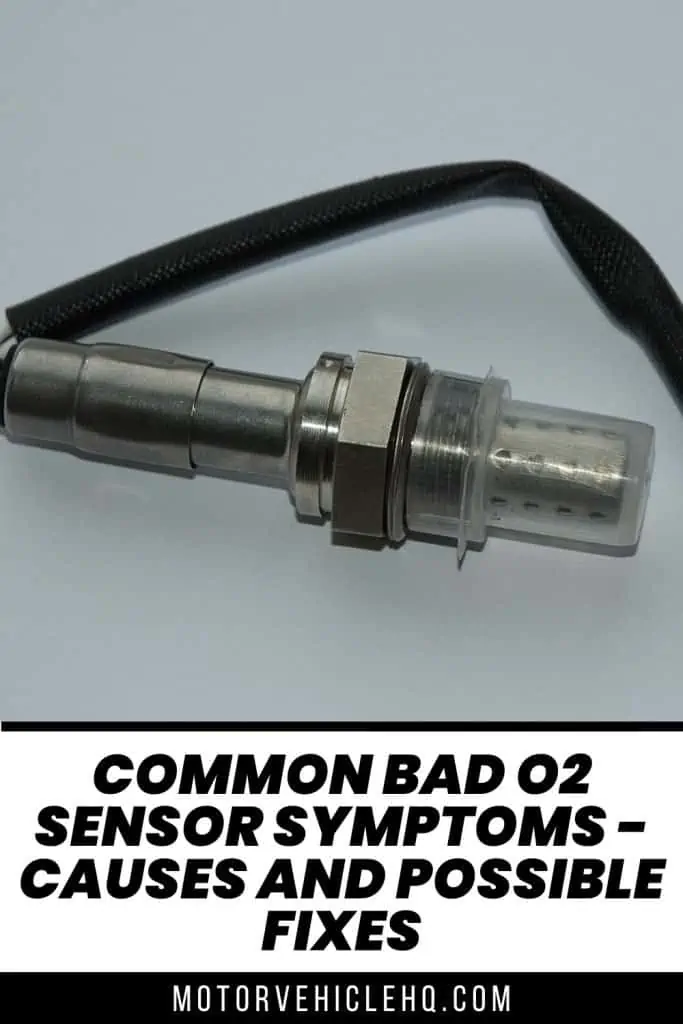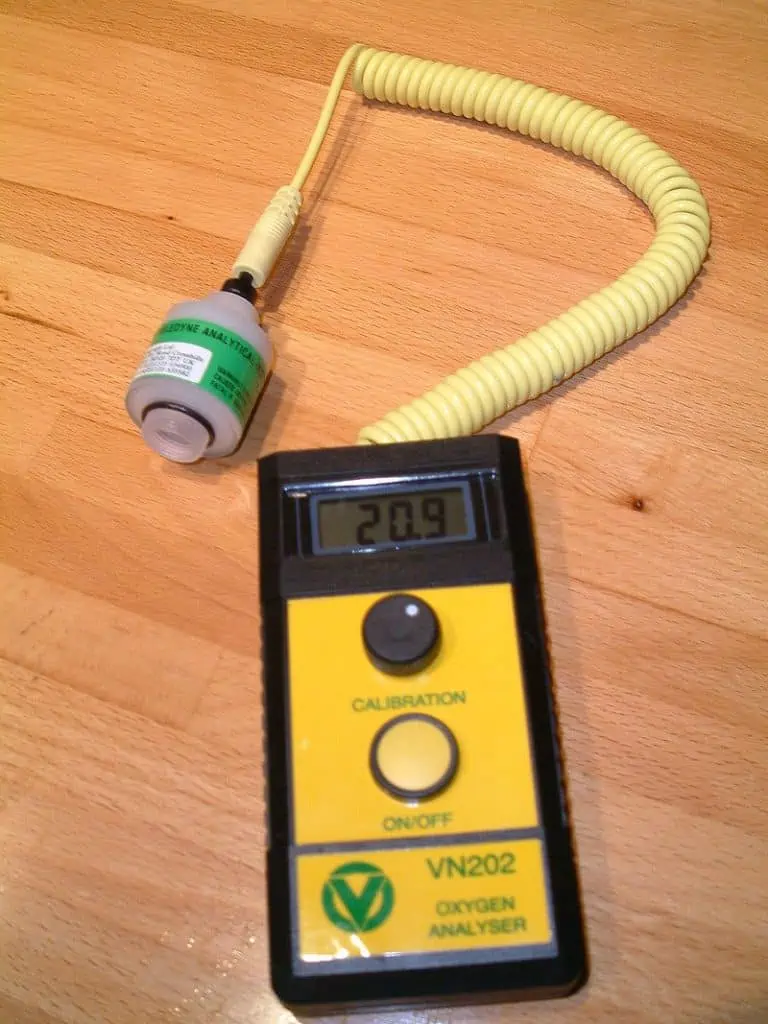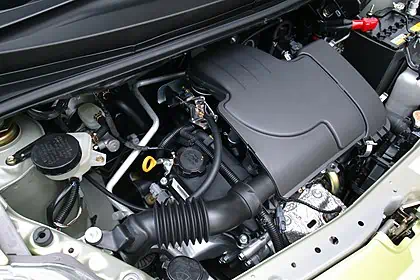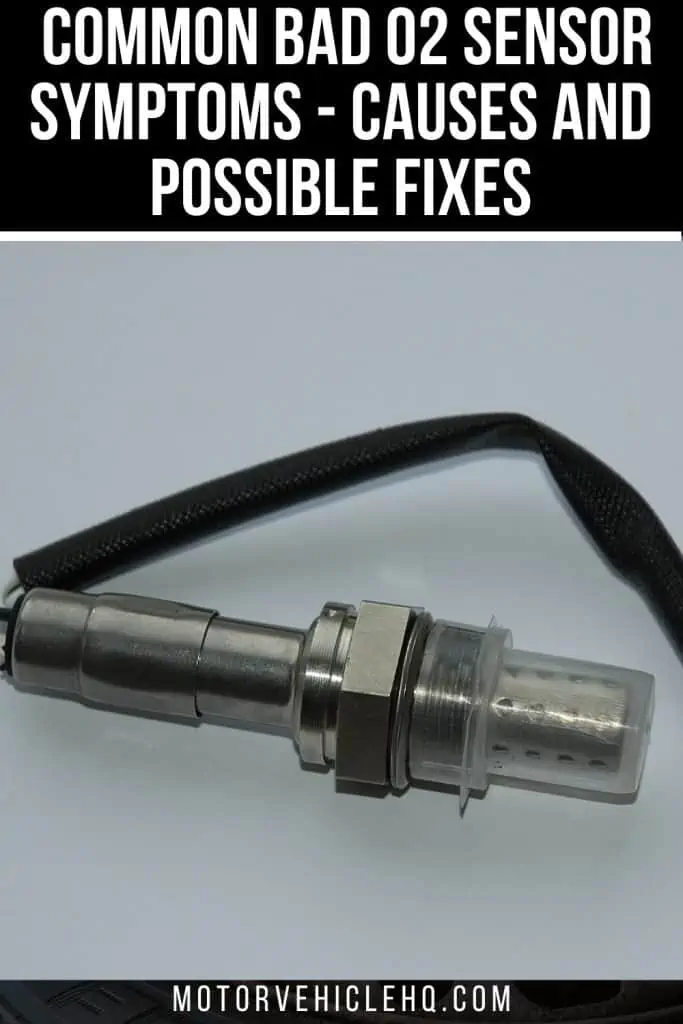Are you experiencing an O2 sensor issue and have you identified a code that shows this? If such is the case, you have come to the correct spot since there is a lot to discuss when it comes to the bad O2 sensor symptoms in your car.
It might be challenging to resolve an issue with your vehicle that is related to the O2 sensor. This is the case because the PCM may alter the air-to-fuel ratio thanks to this sensor, which is quite significant.
It is also challenging to access. They may be placed beneath the car and hidden there. This means that if your downstream O2 sensor has to be replaced, you almost certainly require a raise.
Replacement of the upstream O2 sensor is much simpler. But an in-depth discussion of the two will be provided later in this essay.
First, we will discover what an O2 sensor is, where it is located, and the differences between the two types of sensors. After that, we’ll discuss the signs of a malfunctioning oxygen sensor and go into further detail about how to identify this sensor’s issues and replace it.
So please continue reading to discover more about how to cope with a malfunctioning O2 sensor.
An O2 Sensor: What Is It?
Let’s first get acquainted with the subject and discover more about the fundamentals of the O2 sensor. There are perhaps readers of this article who are just beginning their work with vehicles and who are interested in understanding the fundamental operation of this technology.
A three-wire oxygen sensor by Mnemo / CC BY-SA 3.0. Your car’s oxygen sensor is in charge of figuring out how much oxygen is left in the exhaust gases coming out of the engine. The sensor sends the measurements it collects to the vehicle’s powertrain control module, which regulates fuel injection and combustion levels in the engine.
Understanding the fundamentals can help you better appreciate and deal with the bad O2 sensor symptoms. So let’s start.
This sensor’s objective is to gauge the flow of oxygen in the exhaust, as its name suggests. It’s crucial to collect this information if you want your engine to function correctly and keep a smooth idle.
Your engine won’t be able to properly regulate the air-to-fuel mixture without this sensor. This will lead to bad performance and poor engine operation. You don’t want it to happen to you, to be honest.
In case you weren’t aware, the optimal air-to-fuel ratio is 14.7:1. But what do these figures indicate? These figures indicate that you should always have 1 part gasoline and 14.7% air. The symptoms of a malfunctioning O2 sensor will persist whenever these conditions are not satisfied.
These include an air-to-fuel combination that is lean or rich. When there is too much air in the engine, the situation is called lean. Additionally, a rich condition occurs when the intake is overfilled with gasoline.
The rich condition is more prevalent when the O2 sensor malfunctions. But I’ll get to that later. Let’s first study the placement of the O2 sensor before discussing the bad O2 sensor symptoms in a car.
Locations of O2 Sensors
As we mastered the fundamentals of the O2 sensor and discovered its function. We believe that extra information about the position of the O2 sensor is now necessary. Before learning the bad O2 sensor symptoms in a car, this is necessary.
So, where on a vehicle does this part reside? On the tailpipe is where the O2 sensor is installed. Every vehicle has this issue. This component will not be installed anywhere else.
It’s important to note that there are two of these sensors. Before the catalytic converter, one sensor is attached, and after the catalytic converter, another is also attached.
The first one is the most crucial, and if it fails, the catalytic converter might sustain significant damage. As a result, anytime you have a defective O2 sensor, attempt to fix it as quickly as you can. But how can you tell which sensors are which?
They are either screwed on the exhaust pipe or the exhaust manifold, as you will notice. The cold component and the wiring are on the other side, and the probe is the one that bolts in. This wiring enters your harness and is connected to the PCM from there.
So, to summarize, if you see a code with the phrase “bank 1 sensor 1,” this is what you should do. It indicates that the first O2 sensor on Bank 1 of your engine is located there.
The sensor that pursues the catalytic converter is sensor 2. And now we have reached the crucial section that will be covered in the next chapters before we learn about the signs of a malfunctioning O2 sensor.
Vehicle’s O2 Sensor Types
Let’s now discuss the two different kinds of O2 sensors that are available. Before you get into the poor O2 sensor symptoms, you need to be aware of these sorts.
This is essential for detecting a bad O2 sensor and identifying the malfunctioning sensor. Fortunately, it is nothing new; we are already familiar with these sensors. However, we must remove something. But there is more to that in the following two chapters.
Since an oxygen sensor aids the vehicle’s PCM in regulating the fuel mixture and the exhaust gas released into the environment, a car with a damaged oxygen sensor also emits dangerous carbon-based chemicals that contribute to global warming.
1. The Upstream O2 Sensor
You will almost certainly encounter the term upstream O2 sensor while diagnosing a problem with the O2 sensor based on the indications of a malfunctioning O2 sensor.
Many people are bewildered by this, but you shouldn’t be one of them. The top sensor, which belongs to this type, is typically installed on the exhaust manifold or before the catalytic converter.
Therefore, if you receive the message from the upstream oxygen sensor, there is an issue with the first sensor. Consequently, bank 1 sensor 1 and bank 2 sensor 1 The upstream O2 sensors are these two. Before learning the signs of a malfunctioning O2 sensor, let’s discuss the next sort of O2 sensor.
2. The Downstream O2 Sensor
Before discussing the signs of a malfunctioning oxygen sensor, we’d want to talk about the downstream oxygen sensor.
But what distinguishes this downstream O2 sensor from the upstream sensor? Because this O2 sensor is placed after the catalytic converter, it is different.
Being installed after the catalytic converter means that it provides the PCM with a wealth of information about how the converter operates. Therefore, whenever you encounter a P0420 or P0430 code associated with the catalytic converter, it is likely that the downstream O2 sensor detected an anomaly inside the converter that caused you to receive this message.
You must distinguish between the two sorts because of this. They could be comparable in terms of size and shape. However, they are acting otherwise. However, this does not imply that you should disregard the signs of a malfunctioning O2 sensor. We will go into greater detail in future chapters about these symptoms. So, stick with me.
Why is an O2 Sensor Necessary In a Car?
The oxygen sensor is in charge of determining how much oxygen is still present in the exhaust gases leaving the engine of your car. To ensure proper fuel injection levels and effective fuel combustion in the engine, the sensor transmits the measurements it receives to the powertrain control module of the vehicle.
Therefore, having a defective oxygen sensor implies that your car will have air-to-fuel ratio issues, which can show up in a variety of ways, such as poor fuel combustion and poor engine performance.
A car with a failed oxygen sensor also emits harmful carbon-based chemicals that contribute to global warming since oxygen helps the PCM of the vehicle control the fuel mixture and the exhaust gas emitted into the environment.
Oxygen sensors are essential auto components because they monitor the air-to-fuel ratio in your car’s engine and send data to the computer so it can make the appropriate adjustments.
The oxygen level in the engine is affected by the surroundings. The ratio of gasoline to oxygen during combustion is influenced by variables such as temperature, altitude, air pressure, engine temperature, and engine load.
Your engine produces and emits more pollutants into the environment when it burns a lean mixture with a high oxygen-to-fuel ratio.
Exhaust catalytic converter by The RedBurn / CC BY-SA 3.0. In an automobile, there are two oxygen sensors. One sensor is attached before the catalytic converter, and another is likewise attached after the catalytic converter.
Here is how to determine if an oxygen sensor is defective, in addition to the fault code of O2 sensors (P0131), which is sent to signal failing sensors.
An O2 Sensor: How Does It Work In a Car?
Before we go to the symptoms, it is crucial to comprehend how this little device operates. An oxygen sensor is about the same size as a spark plug. The oxygen sensor’s job is to monitor the level of oxygen in the exhaust.
The sensor measures the amount of oxygen in the exhaust and compares the readings to the ambient oxygen levels. The sensors send the data to the computer in your car, which processes it and makes additional modifications.
The vehicle’s engine system will then modify the ratio. The result of this procedure is to make your car run more effectively. O2 sensors also contribute to reducing harmful emissions and enhancing fuel efficiency. Modern vehicles have electronic engines with sensors to control and improve performance.
The oxygen-to-fuel ratio in the engine is modified as the vehicle’s engine system collects this data. The sensors continuously monitor the oxygen levels in the exhaust and provide readings to the vehicle’s engine system.
A heavy mixture of gasoline will be injected into the engine when the O2 sensors in your car are damaged or malfunctioning. Your car’s fuel usage will rise when this circumstance occurs. In addition, the car will produce more carbon as a result.
Which are the Common Bad O2 Sensor Symptoms?
Let’s now get down to business and discover more about the bad O2 sensor symptoms in your car. If you didn’t already know, there are numerous symptoms related to this O2 sensor, and you must become familiar with them all if you want to be able to identify the issue.
Therefore, pay close attention as we go over every aspect and explain how to diagnose a broken sensor as well as the bad O2 sensor symptoms for a car. So, stick with me.
1. The Check Engine Light Comes On
The check engine light is the first and most significant symptom on our list of malfunctioning O2 sensor signs. Whenever there is an issue with one of your O2 sensors, the check engine light nearly always comes on.
These sensors are crucial to the proper operation of the engine, and the PCM depends on them to be in top condition. Therefore, the PCM continuously tests them, and anytime it detects an issue with a particular O2 sensor, it chooses to illuminate the check engine light.
The O2 sensor is connected to a sizable number of issue code codes. However, problems with the upstream O2 sensor are the most common. As we previously mentioned, this particular sensor is located very high inside the engine. Specifically, after the exhaust manifold but before the catalytic converter, or on the exhaust manifold.
They frequently fail because of the high heat they are subjected to. You can encounter codes that relate to the sensor’s or the heater element’s electrical circuit. When such reports are made, it is a sign that something is off and needs to be investigated. P0134 and P0162 are some reference codes.
However, there may also be codes related to the mixing of air and fuel. P0171, P0175, and additional codes, as examples. Some of them show a lean air-to-fuel ratio, while others show a rich one.
The check engine light by Wikiuser100000 / CC BY-SA 3.0. The check engine light almost often illuminates when one of your O2 sensors isn’t working properly.
The MAF sensor and the O2 sensor need to be checked whenever there is an air mixture code. Let’s move on to the remaining signs of a malfunctioning O2 sensor.
2. Improper Air-to-Fuel Mixture
A bad air-to-fuel mixture is the second most frequent symptom on our list of bad O2 sensor symptoms. However, why is that so?
The O2 sensor is in charge of changing the air-to-fuel mixture, as we previously mentioned. Therefore, once this sensor fails, your car will often run rich.
Running rich results in excessive fuel consumption by the vehicle. Less air will be present, and more fuel will be present. As a result, you might have a code, like the P0175, for instance.
When the vehicle is running rich, it is obvious that the O2 sensor or possibly the injectors are malfunctioning in your vehicle. Let’s move on to the following signs of a malfunctioning O2 sensor.
3. Harsh Idle
The second issue on our list of malfunctioning O2 sensor symptoms is when your engine idles poorly.
This will always be the case if your O2 sensor is damaged. At idle speed, the engine will not be at all content. Until you choose to replace this sensor, you will constantly run across this issue.
The engine will restart operating smoothly and performing well after being replaced with a good sensor. You will have to deal with these indications of a bad O2 sensor till then.
4. Hesitation and Stalling In Engines
The issue with engine performance is the next on our list of signs of a malfunctioning O2 sensor that we’d like to discuss.
When this issue arises in your car, starting the engine will be challenging. The engine will sputter and run poorly. The engine won’t have any power, and you’ll feel as though you’ve lost 30 horsepower or even more in some extreme situations.
In the worst situation, your engine may suddenly stall. This, along with the harsh idle, will be apparent. The engine will shut off if you don’t give the vehicle enough gas since the engine RPMs will drop sharply.
The engine will then need to be restarted repeatedly. You don’t want to be in this circumstance, which is a terrible nightmare. So, be wary of these signs of a malfunctioning O2 sensor.
5. A Poor Fuel Economy
Poor fuel economy is another sign of a malfunctioning O2 sensor, according to our list. If your O2 sensor is malfunctioning or has failed, you will see a considerable decrease in fuel efficiency.
Your air-to-fuel ratio will be off, therefore this drop will be larger than usual. While performance won’t be noticeably worse, the fuel gauge will keep dropping.
This will result in poor engine performance. This is the reason you need to investigate further and figure out what’s wrong with your car. After we’ve covered every indication of a malfunctioning O2 sensor and you’ve learned what to anticipate, we’ll talk more about that.
A car engine by Tennen-Gas / CC BY-SA 3.0. The engine system of the car takes information from the PCM and modifies the oxygen-to-fuel ratio. The sensors give readings to the vehicle’s engine system while continuously monitoring the oxygen levels in the exhaust.
6. Car Exhaust Produces Black Smoke
The symptom of black smoke emerging from the exhaust when you apply heavy throttle is another on our list of signs of a malfunctioning O2 sensor.
The stench of rotten eggs is another indication of this black smoke. A defective catalytic converter is also strongly associated with these symptoms.
The most surprising fact is that a lot of catalytic converter failures are caused by bad O2 sensors in vehicles. Additionally, replacing these converters is extremely expensive.
To avoid having to repair your car’s catalytic converter and O2 sensor, you must first understand why the check engine light is on and then address the underlying source of the problem. In the worst situation, this might cost you $2,000 to $2,500. Let’s now discuss the final sign on our list of poor O2 sensor symptoms.
7. Massive Emissions
High emissions are the last sign on our list of bad O2 sensor symptoms. What if you tried to register your car but failed the test? Why is this the case?
This is true because your vehicle will emit significantly more pollutants when the O2 sensor isn’t functioning properly than when the catalytic converter and O2 sensor are both in good working order.
When you fail the emissions test in these circumstances, there are two possibilities. You are either experiencing signs of a bad O2 sensor or a bad catalytic converter. But how do you identify this issue with the bad O2 sensor? In the chapter that follows, we’ll talk about that.
8. Emission Test Failure
Failure of emission tests regularly is another indication that you might have a bad O2 sensor.
To reduce environmental pollution, some counties and states mandate that cars undergo routine emission tests. The oxygen sensor helps with emission management and is located in the exhaust manifold.
Therefore, failing the emission tests may suggest that there is a problem with your oxygen sensor and control system.
You should see a specialist to accurately analyze your car’s issue because improper emissions are caused by more than just the oxygen sensor and fuel ratio regulating system.
9. A Harsh Engine Sound
Once you get used to driving your vehicle, you may quickly identify unsettling engine noises. An efficient engine runs relatively quietly. Therefore, the likelihood that you have a defective oxygen sensor issue increases when your vehicle produces loud noises, typically when it is idle.
Unpleasant noises are caused by defective oxygen sensors that alter fuel injection timing and combustion levels. Your vehicle will be difficult to accelerate and may shut off abruptly while you are driving if the fuel is not burned properly.
10. Irritating Smell of Rotten Egg
Recently, has the fragrance of your car changed? Naturally, you might not interpret it as a sign of a failing auto component.
But kindly be aware that the unpleasant odor could be the result of a damaged oxygen sensor. Too much fuel in the engine is the cause of the rotten egg stench coming from the defective oxygen sensor.
Another sign of a bad O2 sensor is when black smoke starts to come out of the exhaust when you apply heavy throttle.
An excessive amount of fuel in the engine is the main cause of a sulfurous odor. Additionally, you can see a plume of black smoke emerging from the exhaust.
So, record the frequency and amount of gas refills every time you use it. If your vehicle frequently runs out of gas, get a qualified mechanic on the job right immediately!
Diagnosing and Replacing the O2 Sensor
We can now go on to the diagnosis procedure as we already discussed the bad O2 sensor symptoms in a car. For you, this is the section of the article that matters the most. All you need to know is how to accomplish this properly.
An OBD2 scanner is the first item you’ll need to diagnose a malfunctioning O2 sensor. You will be able to determine which sensor is malfunctioning with the help of this scanner. You should search for the codes connected to these sensors or the air-to-fuel ratio among the countless others that will likely be present.
After determining which sensor generates codes, for instance, bank 1 sensor 1, The next step is to begin diagnosing the sensor. You will need a multimeter tool for this as well as the ability to remove the sensor from the car. You can test resistance, voltage, continuity, and a huge variety of other things with this multimeter equipment.
However, for our application, we are just concerned about the voltage and resistance. We’ll discuss two ways to test this sensor. by monitoring the voltage as well as the resistance.
The first technique entails determining the resistance. Between 2 and 4 ohms should be produced by a decent sensor. You must adjust the multimeter to ohms and observe the results for this.
Voltage measurement will be necessary for the second testing technique. In case you weren’t aware, the sensor produces electricity when it heats up. To see the readings, you must heat the sensor and adjust the multimeter to read in volts. The sensor is in good shape if there is a good voltage.
How Much Is the Cost of Replacing an O2 Sensor?
After discussing the signs of a malfunctioning O2 sensor and how to identify one, let’s look at the price of an O2 sensor replacement.
The O2 sensor will typically cost you $150 to $300. Additionally, the installation would run you around $100. Therefore, you should budget $250 on average to replace this component.
Short-Term Repair for a Bad O2 Sensor
Cleaning the O2 sensor thoroughly and checking that the probe inside the sensor is in good condition will provide a temporary repair for the O2 sensor with bad O2 sensor symptoms.
The sensor can occasionally stop working because the probe becomes clogged. There is nothing you can do to temporarily fix the sensor; if this doesn’t work, you will need to replace it.
Is It Safe to Drive a Car That Has a Bad Oxygen Sensor?
The catalytic converter can be found either before or after oxygen sensors. As a result, if your oxygen sensors fail and your check engine light illuminates, you will receive the generic P0136 code, which denotes an issue with the first bank of oxygen sensors in your exhaust system. The code often denotes unclean or failing oxygen sensors.
Even though your car will still function if its oxygen sensors are broken and its check engine light is on, you shouldn’t drive it farther than necessary.
Powertrain control module by Mgiardina09 / CC BY-SA 3.0. The oxygen sensor in your automobile measures how much oxygen is present in exhaust gases and transmits that information to the Powertrain Control Module (PCM), which uses it to instantaneously determine the ideal air-to-fuel ratio for your engine.
You’ll observe that the car will operate slowly and experience sporadic misfires. If you don’t fix your vehicle as quickly as feasible, the malfunctioning sensor’s poor fuel-to-oxygen ratios could lead to additional mechanical issues.
When Should a Car’s Oxygen Sensor Be Replaced?
You might be unsure whether to replace your oxygen sensor if you have seen any of the symptoms. The oxygen sensors in your car could sustain damage much like other components. A new oxygen sensor can improve your car’s safety and fuel economy.
Every 60,000 to 90,000 miles if your car is more than 15 years old, you must replace the oxygen sensor. It’s possible that an outdated oxygen sensor won’t be able to provide reliable input.
You can avoid failures and harmful emissions by adhering to the replacement schedule. As soon as you notice any signs, such as low gas mileage or a blinking engine light, we advise scheduling a technician checkup.
The Conclusion
Your car’s oxygen sensor analyzes the amount of oxygen in your exhaust gases and sends that data to the Powertrain Control Module (PCM), which uses it to instantly calculate the right air-to-fuel ratio for your engine.
The sensor, which is part of the exhaust system, facilitates effective fuel injection and engine timing, helping to reduce emissions. To keep your engine’s air-to-fuel ratio at its ideal level, the oxygen sensors send information to the PCM of your car.
Before your oxygen sensor fails, there are some things to look out for. A defective or failing oxygen sensor will impair exhaust emissions and engine performance. Before your vehicle sustains further damage, inspect and replace your oxygen sensor if you encounter misfires, poor engine performance, or black exhaust fumes.
We have talked a lot about the bad O2 sensor symptoms for a car in this article. First, we gained a fundamental understanding of the O2 sensor’s operation. The mounting sites and how to locate them on the car were then discussed.
Then, we discussed the bad O2 sensor symptoms and discovered which ones are the most typical. After that, we discovered how much it would cost to identify and fix the problem.

A three-wire oxygen sensor by Mnemo / CC BY-SA 3.0

Jim Wicks is the founder of MotorVehicleHQ. With over two decades of experience in the automotive industry and a degree in Automotive Technology, Jim is a certified car expert who has worked in various roles ranging from a mechanic, car dealership manager, to a racing car driver. He has owned more than 20 cars over the past 15 years. Ask him about any vehicle you see on the road and he can tell you the make, model and year. He loves the aesthetics of all things cars, and keeps his vehicles in pristine condition.
In his free time, Jim enjoys getting his hands dirty under the hood of a classic car or taking long drives along the country roads. His favorite car? A 1967 Shelby GT500, a true classic that, according to Jim, “represents the pure essence of American muscle.”







